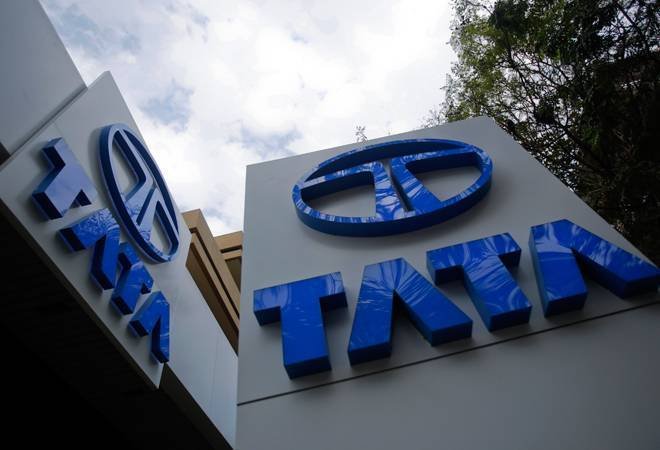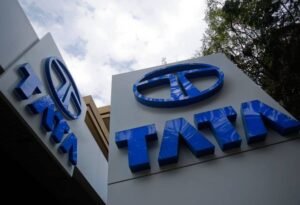Tata Motors, a subsidiary of the Tata Group, is one of India’s leading global automobile manufacturers. The company offers a diverse range of vehicles, including cars, trucks, buses, and electric vehicles. In this SWOT analysis, we will examine the strengths, weaknesses, opportunities, and threats facing Tata Motors in the automotive industry.
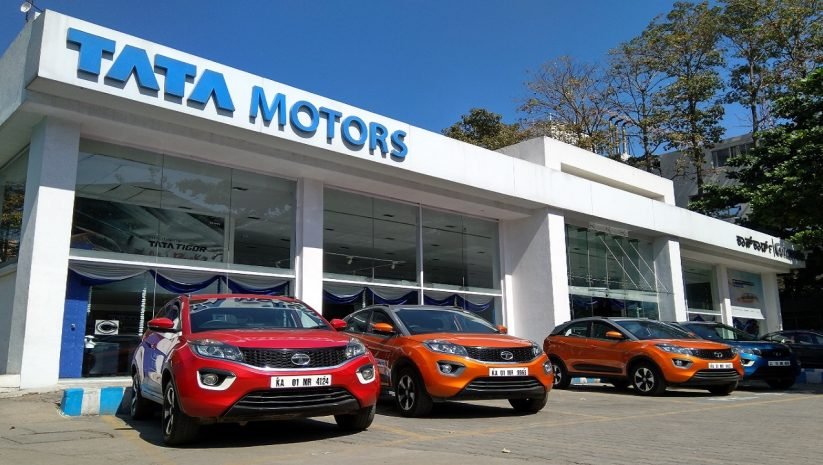
Jump Ahead To :
Key Takeaways
- Tata Motors is a leading global automobile manufacturer under the Tata Group.
- The company offers a wide range of vehicles, including cars, trucks, buses, and electric vehicles.
- SWOT analysis helps identify the strengths, weaknesses, opportunities, and threats of Tata Motors in the automotive industry.
- Understanding the SWOT factors is essential for Tata Motors to make informed strategic decisions and remain competitive.
- It’s competitors include Maruti Suzuki , Mahindra & Mahindra , Hyundai Motor India & Honda Cars India
About Tata Motors
Tata Motors is a renowned Indian automobile manufacturer with a rich history in the industry. Established in 1945 as Tata Engineering and Locomotive Company (TELCO), the company successfully ventured into the passenger vehicle market in 1988 and has since emerged as one of the largest Original Equipment Manufacturers in India.
With a wide range of products and services, Tata Motors has positioned itself as a leading global player in the automotive sector. The company offers an extensive lineup of cars, trucks, buses, and even provides vehicle financing options.
Tata Motors takes pride in its unwavering commitment to quality, innovation, and customer satisfaction. Over the years, the company has garnered a loyal customer base due to its exceptional products and top-notch services.
The History of Tata Motors
Tata Motors has a profound and fascinating history that spans several decades. Founded in 1945 by the visionary businessman J.R.D. Tata, the company initially began as a locomotive and engineering enterprise. However, with a forward-looking approach, Tata Motors diversified its operations and revolutionized the Indian automobile industry.
In the late 1980s, Tata Motors made a remarkable entry into the passenger vehicle market. It launched the Tata Sierra, the company’s first-ever passenger vehicle, and from there, the brand continued to expand its product portfolio, earning accolades for its innovative designs and cutting-edge technologies.
Today, Tata Motors stands as a symbol of excellence and resilience, representing the epitome of Indian engineering and manufacturing prowess in the global automotive landscape.
The Commitment to Service Excellence
Tata Motors is not only known for its exceptional products but also for its unyielding commitment to service excellence. With a vast network of dealerships and authorized service centers, the company ensures that its customers receive unmatched support and assistance throughout their ownership journey.
Furthermore, Tata Motors’ after-sales service encompasses everything from routine maintenance and repairs to spare part availability, guaranteeing a hassle-free experience for vehicle owners.
Driven by the philosophy of putting customers first, Tata Motors continually strives to enhance its service offerings, incorporating the latest advancements in technology and customer-centric practices.
The Wide Range of Services Offered by Tata Motors
Tata Motors is renowned for its comprehensive range of services that cater to a variety of customer needs. Whether it is individual buyers, corporate fleet operators, or government organizations, the company offers tailored solutions to address diverse requirements.
Some of the notable services provided by Tata Motors include:
- Vehicle financing options for easy ownership
- Extended warranty programs for added peace of mind
- Insurance plans that provide comprehensive coverage
- Maintenance and servicing packages to ensure optimal performance
- 24×7 roadside assistance for emergency support
By offering these services, Tata Motors goes above and beyond to provide a holistic experience that extends beyond the purchase of a vehicle, fostering long-term relationships with its customers.
Tata Motors Strengths
Tata Motors, a prominent player in the automotive industry, possesses several key strengths that have contributed to its success and market dominance. These strengths enable the company to effectively compete on a global scale and maintain a strong position within the industry.
Market Reach
One of Tata Motors’ notable strengths is its vast market reach, extending across more than 125 countries. With a worldwide network of touch points, the company has established a global presence that allows it to cater to diverse customer needs and preferences. This broad market reach enhances Tata Motors’ ability to penetrate different regions, adapt to local market demands, and gain a competitive edge.
Brand Recognition
Tata Motors has successfully built a strong brand recognition and reputation over the years. The company is widely recognized for its commitment to quality, reliability, and customer satisfaction. Through its strategic branding efforts, Tata Motors has developed a positive brand image that resonates with consumers. This brand recognition not only instills trust in customers but also differentiates Tata Motors from its competitors and drives customer loyalty.
Innovation and Dynamic Business Approach
Tata Motors is known for its culture of innovation and its dynamic business approach. The company constantly strives to stay ahead of market trends and consumer preferences by introducing innovative technologies and features in its vehicles. This commitment to innovation has enabled Tata Motors to deliver cutting-edge products that meet the evolving needs of its customers.
“Innovation is in our DNA. At Tata Motors, we believe that innovation drives progress. It allows us to revolutionize the automotive industry and offer our customers the best-in-class products and solutions.”
The company’s dynamic business approach involves adapting to changing market dynamics and exploring new opportunities. Tata Motors actively explores partnerships, collaborations, and strategic investments to fuel growth and extend its market presence. This dynamic approach enables Tata Motors to capitalize on emerging trends and stay at the forefront of the industry.
Overall, Tata Motors’ strengths, including its expansive market reach, strong brand recognition, and innovative business approach, have positioned the company as a global leader in the automotive industry. These strengths provide a solid foundation for Tata Motors to continue its growth and effectively navigate the competitive landscape.
Tata Motors Weaknesses
Despite its notable strengths, Tata Motors also faces certain weaknesses that impact its position in the automotive industry.
Operational Costs
Tata Motors struggles with higher operational costs compared to some of its competitors. These costs include expenses related to manufacturing, distribution, and research and development. The higher operational costs can impact the company’s ability to operate efficiently and effectively.
Limited Presence in the Luxury Segment
While Tata Motors offers a wide range of vehicles, including luxury cars under its brands like Jaguar and Land Rover, it has not been able to establish a strong foothold in the luxury segment. It faces strong competition from global luxury brands like BMW, Mercedes-Benz, and Audi. The limited presence in the luxury segment hinders Tata Motors’ market share and revenue potential.
Competition from Global Brands
Tata Motors faces intense competition from global brands like Ford, Toyota, Honda, and Volkswagen. These brands have a wider global presence and a strong customer base. The competition not only affects Tata Motors’ market share but also puts pressure on the company to invest in innovation, marketing, and branding to stay competitive.
“Tata Motors’ limited presence in the luxury segment puts it at a disadvantage against global brands like BMW, Mercedes-Benz, and Audi.”
Financial Performance
Tata Motors has experienced lower rates of profit compared to some of its competitors in the automotive industry. The company reported a net loss of $1.7 billion in 2021, indicating the challenges it faces in achieving sustainable profitability. The financial performance of Tata Motors highlights the need for cost optimization and improved revenue streams.
To understand the weaknesses more comprehensively, let’s take a look at the following table that highlights Tata Motors’ operational costs and financial performance:
| Type of Cost | Amount (in millions) |
|---|---|
| R&D Expenses | $500 |
| Manufacturing Costs | $1,200 |
| Distribution Expenses | $800 |
| Net Profit | -$1,700 |
As seen in the table, Tata Motors faces significant operational costs, which can impact its overall financial performance and profit margins.
Tata Motors aims to address these weaknesses by adopting cost optimization strategies, exploring innovative solutions, and expanding its market presence through targeted investments and partnerships.
Tata Motors Opportunities
Tata Motors, as a prominent player in the automotive industry, has several enticing opportunities to explore and capitalize on. By strategically leveraging these prospects, the company can further strengthen its position in the market and drive growth.
Digital Marketing
One key opportunity for Tata Motors lies in the realm of digital marketing. Embracing cutting-edge digital strategies can enable the company to enhance brand visibility, engage with its target audience, and gather valuable insights for product improvement. By leveraging digital platforms, such as social media and online advertising, Tata Motors can effectively reach and connect with consumers on a more personal level, fostering stronger relationships and boosting customer loyalty.
Supply Chain and Service Expansion
Tata Motors can also focus on expanding its supply chain and service network, paving the way for increased market reach and customer satisfaction. By optimizing its supply chain management processes, the company can ensure timely delivery of products and improve overall operational efficiency. Furthermore, by enhancing its service offerings and providing exceptional customer support, Tata Motors can foster a positive brand reputation and cultivate long-term customer loyalty.
Acquisitions and Joint Ventures
To spur growth and expand its business portfolio, Tata Motors has the opportunity to pursue strategic acquisitions and joint ventures. Collaborating with established players in related industries can provide access to new technologies, markets, and customer bases. Notable acquisitions, such as Jaguar Land Rover, have already proven successful for Tata Motors, enabling the company to tap into the luxury vehicle segment and leverage innovative automotive solutions.
Exploring Electric Vehicles
The rise of electric vehicles presents a significant growth opportunity for Tata Motors. With increasing consumer demand for eco-friendly alternatives, the company can develop and launch a range of electric vehicles that cater to this emerging market. By investing in research and development, Tata Motors can position itself as an industry leader in sustainable mobility solutions, meeting the evolving needs of environmentally-conscious consumers.
“As Tata Motors leverages digital marketing, expands its supply chain and service capabilities, pursues strategic acquisitions, and explores the electric vehicle market, the company stands to unlock tremendous growth potential.”
Overall, Tata Motors has a robust set of opportunities at its disposal. By capitalizing on these prospects, the company can propel itself towards continued success and competitiveness in the dynamic automotive industry.
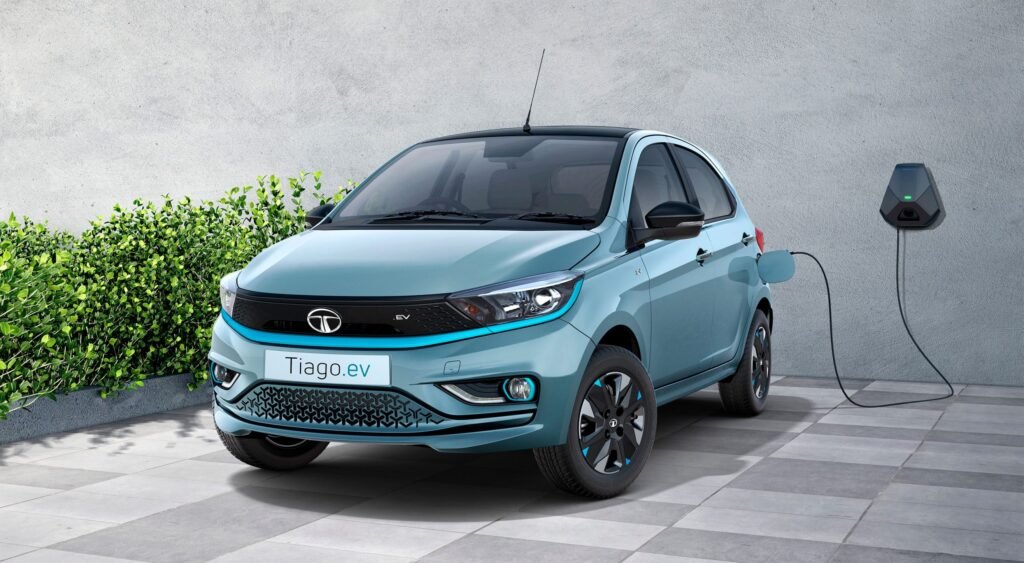
Tata Motors Threats
Like any company, Tata Motors faces several threats in the highly competitive automotive industry. The ongoing COVID-19 pandemic has posed significant challenges not only to Tata Motors but to the industry as a whole. The pandemic has disrupted supply chains, slowed down global demand, and led to various operational difficulties. However, Tata Motors has shown resilience and adaptability in navigating these uncertain times.
One of the major threats that Tata Motors faces is intense competition from key players in the market. Companies like Tesla, Honda, Hyundai, BMW, and others have a strong presence and continue to innovate at a rapid pace. This competition puts pressure on Tata Motors to constantly enhance its offerings and stay ahead in terms of technology, design, and customer experience.
Pricing is another critical factor that poses a challenge to Tata Motors. The market is highly price-sensitive, and competitors may resort to aggressive pricing strategies to gain market share. To remain competitive, Tata Motors needs to ensure that its pricing aligns with customer expectations while still generating sustainable revenue and profitability.
Innovation is vital in the automotive industry, and Tata Motors must keep up with the pace of technological advancements. Rapid innovation and evolving consumer preferences present both opportunities and threats. To mitigate this risk, Tata Motors needs to invest in research and development, stay updated with emerging trends, and anticipate future customer needs.
“The automotive industry is constantly evolving, and companies like Tata Motors have to adapt quickly to remain competitive against both traditional and emerging players.” – Automotive Analyst
Competition
Tata Motors faces stiff competition from renowned global brands that have established themselves as leaders in various segments of the automotive industry. These competitors have a strong market presence, brand recognition, and a loyal customer base. Tata Motors needs to differentiate itself through unique value propositions, superior product quality, and exceptional customer service to carve its niche in an increasingly crowded market.
Price Sensitivity
The price sensitivity of consumers in the automotive industry is a significant challenge for Tata Motors. Customers are constantly seeking value for money, and price plays a crucial role in their purchasing decisions. Tata Motors needs to strike a delicate balance between affordability and profitability to cater to a wide range of customers while maintaining its competitive position in the market.
Pandemic Impact
The COVID-19 pandemic has had a profound impact on the automotive industry, causing disruptions in manufacturing, supply chains, and consumer demand. Tata Motors, like other manufacturers, had to implement strict safety measures, manage reduced production capacities, and adjust to changing market dynamics. Adapting to the pandemic challenges and the post-pandemic recovery is crucial for Tata Motors’ future success.
In summary, Tata Motors faces threats from the ongoing pandemic and its related disruptions, intense competition from global players, pricing pressures, and the need to stay innovative in a rapidly evolving industry. By addressing these challenges strategically, Tata Motors can overcome threats and continue to grow as a leading player in the automotive market.
Tata Motors Financial Performance
Tata Motors has demonstrated impressive financial performance, showcasing its market presence and scalability in the automotive industry. In 2021, the company generated an annual revenue of $42 billion, highlighting its ability to generate substantial sales and sustain its market position.
The net profit reported by Tata Motors in 2021 was -$1.7 billion. While this figure may appear negative, it reflects various factors, including investments in research and development, expansion initiatives, and market fluctuations. Despite this temporary setback, Tata Motors remains a formidable player in the automobile sector.
Furthermore, Tata Motors boasts a market capitalization of $25.37 billion, underscoring the company’s robust market value and investor confidence. This figure, calculated by multiplying the total number of outstanding shares by the current market price, highlights Tata Motors’ attractiveness as an investment opportunity.
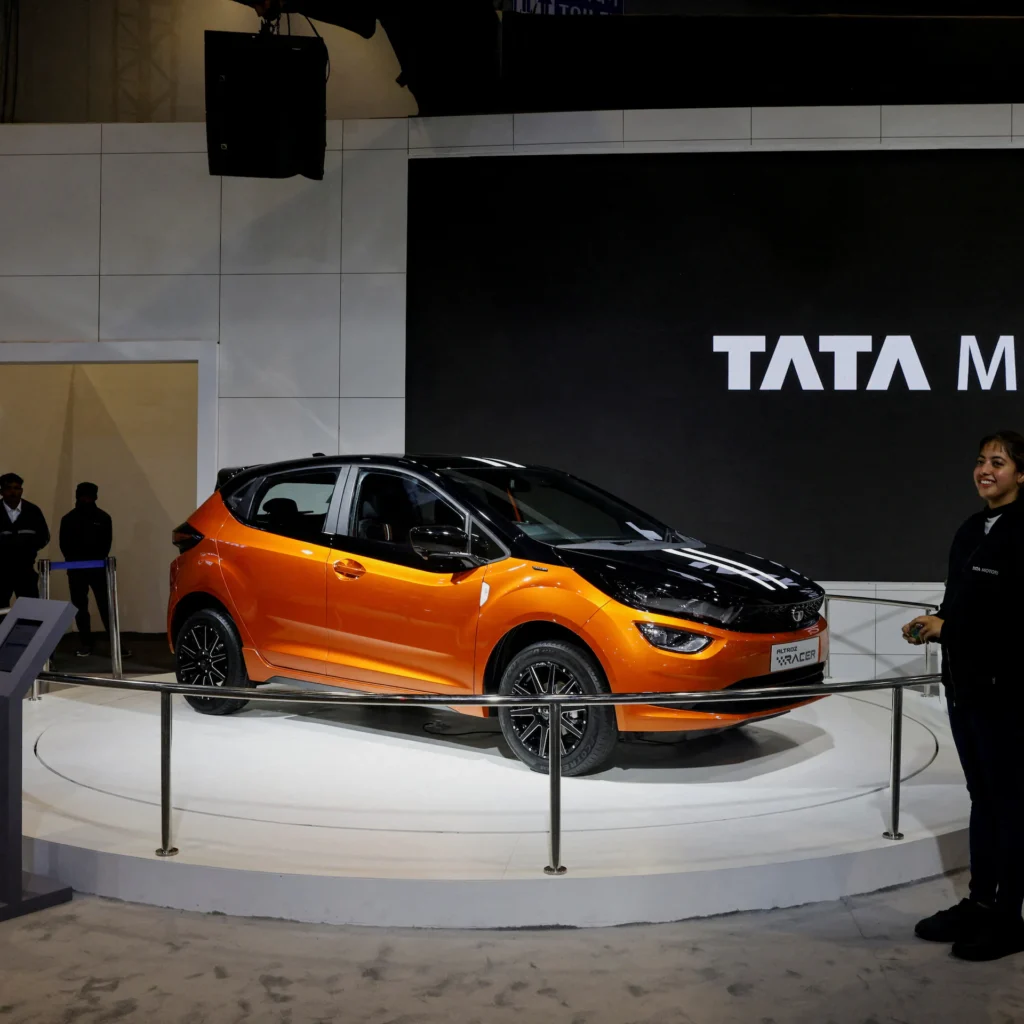
The financial performance of Tata Motors signifies its strategic position in the industry, with a notable revenue stream, substantial market capitalization, and a commitment to innovation and growth.
Tata Motors Global Operations
Tata Motors, a renowned Indian automobile manufacturer, has expanded its operations globally, establishing manufacturing facilities in multiple countries. With its commitment to producing high-quality vehicles, the company has become a key player in the global automotive industry.
Manufacturing Facilities
Tata Motors operates manufacturing facilities in various countries, including India, the United Kingdom, and South Africa. These facilities are equipped with state-of-the-art technology and adhere to stringent quality control standards. By strategically locating its manufacturing plants, Tata Motors ensures efficient production and timely delivery of vehicles to its customers worldwide.
Exports
As part of its global operations, Tata Motors exports its vehicles to numerous markets worldwide. This global reach allows the company to cater to the diverse needs and preferences of customers across different regions. By expanding its export market, Tata Motors has not only increased its international footprint but also diversified its revenue streams.
“Our global operations play a crucial role in our growth strategy. By manufacturing our vehicles in different countries and exporting them to various markets, we are able to expand our presence, cater to a wider customer base, and contribute to the local economies.” – CEO of Tata Motors
Collaboration with Local Partners
In addition to its manufacturing facilities, Tata Motors forms strategic collaborations with local partners in different regions. These partnerships enable the company to leverage the expertise and resources of local entities, ensuring its vehicles are well-suited for specific markets. Collaborating with local partners also helps Tata Motors navigate local regulations and customer preferences effectively.
Building a Strong Global Brand
Through its global operations, Tata Motors has successfully established itself as a trusted and recognized brand worldwide. The company’s commitment to quality, innovation, and customer satisfaction has contributed to its brand reputation on a global scale. Tata Motors continues to invest in building its brand presence in different markets, solidifying its position as a leading player in the automotive industry.
Tata Motors Manufacturing Facilities
| Country | Manufacturing Facility |
|---|---|
| India | Jamshedpur |
| India | Pune |
| United Kingdom | Jaguar Land Rover (Coventry) |
| South Africa | Rosslyn, Pretoria |
Tata Motors’ manufacturing facilities are strategically located across different countries, enabling efficient production and global distribution of its vehicles. The company’s commitment to quality and innovation is reflected in its state-of-the-art manufacturing facilities.
Tata Motors Acquisitions and Subsidiaries
Tata Motors, as part of its strategic growth plan, has made significant acquisitions and established various subsidiaries to strengthen its business portfolio within the automotive industry. These strategic moves have allowed Tata Motors to expand its market presence, diversify its offerings, and access cutting-edge technologies in key sectors.
Acquisitions
One of Tata Motors’ major acquisitions occurred in 2008 when the company acquired Jaguar Land Rover (JLR). This acquisition not only propelled Tata Motors into the luxury vehicle segment but also positioned the company as a global player in the automotive industry. By integrating JLR into its portfolio, Tata Motors gained access to advanced automotive technologies and iconic brands that have further enhanced its global presence and accelerated its growth trajectory.
Subsidiaries
Tata Motors has established several subsidiaries that cater to different segments of the automotive market. One such subsidiary is Tata Marcopolo Motors, a collaboration between Tata Motors and Marcopolo S.A., a leading bus manufacturer based in Brazil. This joint venture combines Tata Motors’ expertise and market knowledge with Marcopolo’s extensive experience in bus manufacturing. Together, they deliver high-quality, innovative buses to meet the evolving needs of the transportation industry.
These subsidiaries provide Tata Motors with a competitive edge by expanding its product offerings and allowing the company to tap into new markets and segments. Through strategic partnerships and collaborations, Tata Motors continues to strengthen its position as a global leader in the automotive industry.
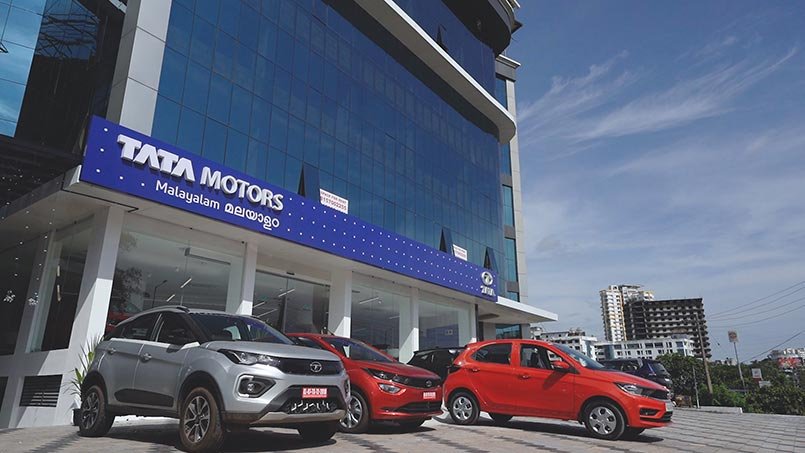
Tata Motors Acquisitions and Subsidiaries
| Acquisition/Subsidiary | Year | Key Benefits |
|---|---|---|
| Jaguar Land Rover | 2008 | Expanded luxury segment, access to advanced technologies |
| Tata Marcopolo Motors | N/A | Enhanced bus manufacturing capabilities, diversified product portfolio |
Tata Motors Future Outlook
As we look towards the future, Tata Motors is poised to thrive in the ever-evolving automotive industry. With a strong commitment to sustainability and innovation, the company is well-positioned to meet the demands of the market while embracing environmentally friendly practices.
One of the key areas of focus for Tata Motors is sustainability. Recognizing the importance of greener manufacturing processes, the company is actively investing in research and development to reduce its carbon footprint. By integrating sustainable practices into its operations, Tata Motors is not only contributing to a cleaner environment but also strengthening its long-term competitiveness.
In line with its commitment to sustainability, Tata Motors is also expanding its electric vehicle lineup. Electric vehicles represent the future of transportation, offering eco-friendly alternatives to traditional fuel-powered vehicles. By investing in electric vehicle technology, Tata Motors aims to capitalize on the growing demand for clean and energy-efficient transportation options.
An important factor contributing to Tata Motors’ bright future outlook is the potential for growth in emerging markets. As economies continue to develop and expand in regions such as Asia, Africa, and Latin America, there is an increasing need for affordable and reliable vehicles. Tata Motors, with its diverse product portfolio, is well-positioned to cater to the demand in these emerging markets, establishing itself as a leading player.
“We are excited about the future of Tata Motors. Our focus on sustainability and electric vehicles, coupled with the opportunities in emerging markets, positions us to drive growth and continue delivering value to our customers.” – [Name], CEO of Tata Motors
In conclusion, Tata Motors embraces a positive future outlook with a strong emphasis on sustainability, electric vehicles, and emerging markets. By staying ahead of industry trends and investing in the right areas, Tata Motors is primed for success in the years to come.
Conclusion
The SWOT analysis of Tata Motors provides a strategic perspective on the company’s strengths, weaknesses, opportunities, and threats in the automotive industry. Despite facing challenges, Tata Motors has established itself as a leading player with a recognized brand image, innovative business approach, and global presence.
To remain competitive, Tata Motors needs to continue focusing on its strengths, addressing its weaknesses, seizing opportunities, and mitigating threats. By capitalizing on its market reach, brand recognition, and innovative mindset, the company can adapt to the evolving automotive landscape and maintain its position as a key player in the industry.
With a commitment to sustainability and expanding its electric vehicle portfolio, Tata Motors is well-positioned to tap into emerging markets and cater to the increasing demand for environmentally-friendly transportation options. By leveraging its strengths and effectively managing its weaknesses, Tata Motors can navigate the industry’s challenges and secure a prosperous future.
